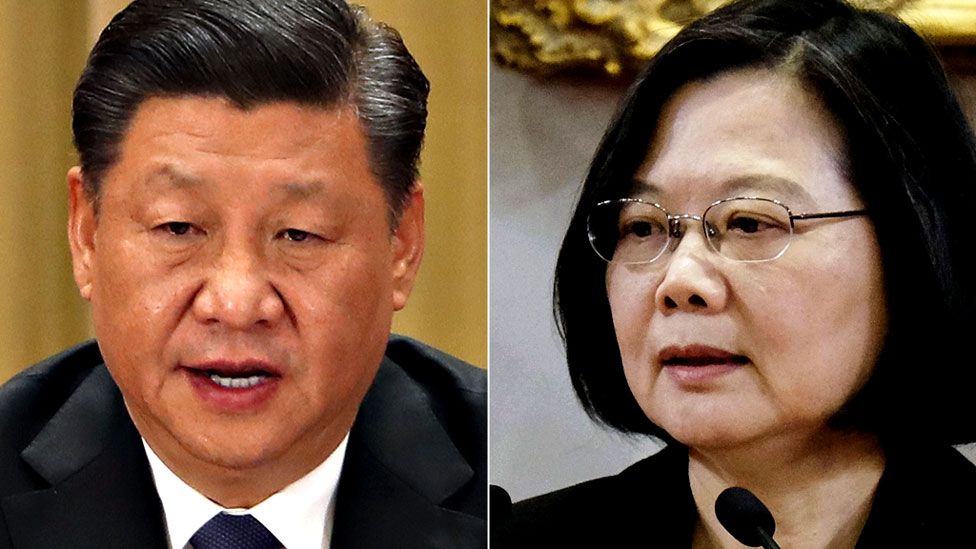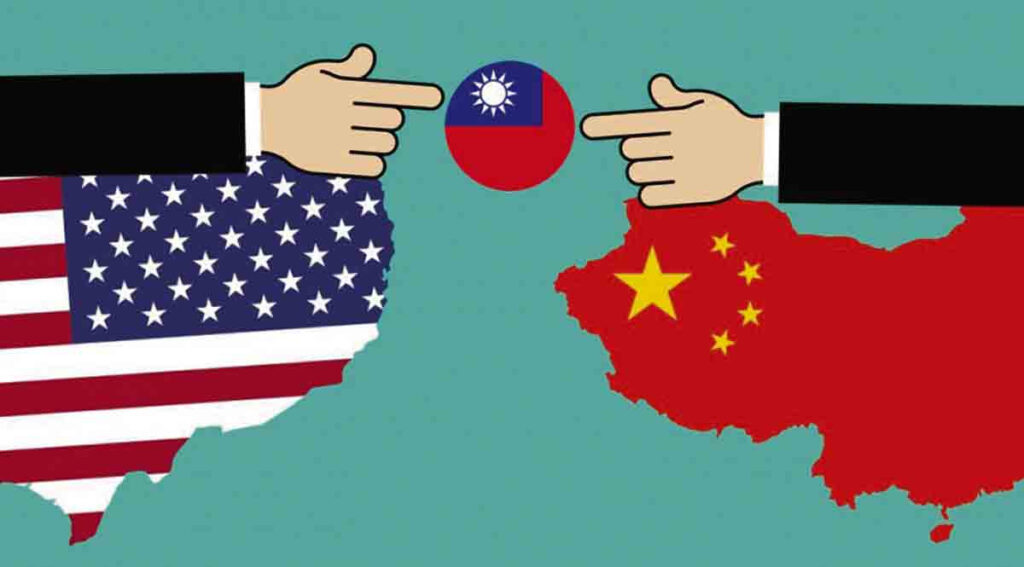China-Taiwan issue – being one of the most disputed borders in modern times. China claims Taiwan as its own territory and has indicated that it would not hesitate to use force to fulfil its one China dream.
Show of military aggression against Taiwan has considerably escalated after routine visits of US Senator Nancy Pelosi to Taiwan and reciprocal visits by Taiwan’s ruling Democratic Progressive Party (DPP) representative in August 2023.
In the recent past, China has considerably increased its conduct of military drills near and around the Taiwanese coast to show its dissatisfaction against increasing Taiwan-US relations.
Genesis of China Taiwan Issue
Quick look into their history is adequate to understand the genesis of conflict between them-
- After the surrender of Japan at the end of World War II, China and Taiwan were placed under the governance of the Republic of China (ROC) on October 25, 1945 to be ruled under Kuomintang (KMT) party.
- However, civil war ensued between the Chinese Communist Party (CCP) and the Republic of China (ROC) in 1949 to gain power.
- At the end of the Civil war, CCP emerged as the stronger contender and declared mainland land as People’s Republic of China. The KMT party retreated to Taiwan and declared Taipei as the capital of the ROC.
- However, view international support garnered by CCP in October 1971, the Republic of China’s UN seat was replaced by People’s Republic of China.
- In diplomatic arenas, both the ROC and the PRC claimed to be the sole legitimate government of “China” for many years.
- Subsequently Taiwan embarked on the journey of democracy to end martial law and successfully culminated in the first direct presidential election in 1996.
- By the year 2000, the DPP had come to power and began to pursue Taiwanese as a distinct identity from China. However, this move irked the CCP who always claimed Taiwan as their own territory.
Reasons for China’s Displeasure

Xi Jinping, the current president of the CCP has been most aggressive and vocal to claim Taiwan as an integral territory of mainland China. His intent to annex Taiwan under the CCP’s reign has been a matter of concern globally.
Taiwan’s President Tsai Ing-wen held an in-person meeting with Speaker of the House Kevin McCarthy during her short visit to the US in April 2023. However, the day after Tsai arrived back in Taiwan, the PLA protested by launching large-scale military exercises around Taiwan.
Of late, Taiwan’s Ministry of National Defence reported that on 7th October 2023, 66 Chinese air force planes and 14 Chinese warships were detected conducting activities in and around the Taiwan Strait. 19 of the detected aircraft either crossed the median line or entered Taiwan’s ADIZ (Air Defense Identification Zone). Reportedly, more than 200 Chinese warplanes have violated the sovereignty of the Taiwanese air space.
Another reason for the CCP to step up its aggression is to distract Chinese citizens’ attention from its multiple failures on numerous fronts. Lately, the CCP has suffered a lot of setbacks like economic slowdown, several factions of the military turning hostile, active power struggle in the party and people’s resistance to the authoritarian regime. In all this chaos, Xi Jinping through CCP aims to restore some semblance of faith in the Chinese people, which is orchestrated through military drills against Taiwan.
Taiwanese Defense Capabilities
Taiwan has been taking several steps to tackle Chinese aggression. Taiwan’s primary focus is two-fold:
- Bolstering its self-defense capabilities
- Expanding its external diplomatic outreach efforts
Militarily, Taiwan has been undergoing rigorous training and stacking up large inventories of anti-air, anti-tank, anti-ship weapons and ammunition. It has also successfully developed its missile systems, rocket artillery, surface ships, fighter aircraft, armored vehicles, and unmanned aerial vehicles (UAVs), and unveiled its first indigenous submarine, ROCS Hai Kung (SS-711) in September 2023.
Apart from that, Taiwan has been developing critical advanced defense technologies to produce new weapon systems, such as next-generation fighter aircraft, new naval vessels, precision-guided missiles, communications, underwater detection, and intelligent unmanned aerial and submersible vehicles.
Taiwan has also been importing state-of-the-art defense equipment from the United States and other countries, such as F-16V fighters, M1A2T tanks, Harpoon missiles and Patriot PAC-3 batteries.
Diplomatically, Taiwan has been increasing its influence across the globe by developing close – though unofficial – ties with Western countries. It has also maintained relations with 59 UN member states, one self-declared state (Somaliland), three territories (Guam, Hong Kong, and Macau), and the European Union via its representative offices and consulates.
Taiwan has also established informal representation in China’s two Special Administrative Regions: Hong Kong and Macau.
The United States has long diplomatic relations with Taiwan since the establishment of the country and has provided economic, technological, and military support. Taiwan is also the semiconductor hub of the world and is significant to the US. The US has on various international platforms highlighted that it will support Taiwan in case China uses force to annex it.
Global Significance of Taiwan
Taiwan is going to hold its presidential election this year and reports of Chinese intervention for spreading disinformation are on the rise. Taiwan is the semiconductor hub of the world and keeping it away from Chinese control is crucial for the global world order. That’s why several world powers are working in tandem with Taiwan to preserve its democracy. The global community must act in a balanced manner to ensure that the bullying act of dominant China shall not subdue Taiwan’s sovereignty. More international forums shall collude to ensure that peace and stability prevail in the region.

